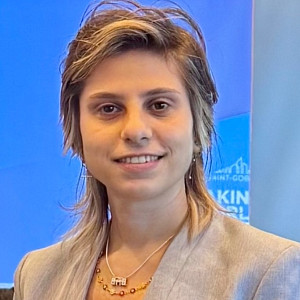Along the courtyard’s longitudinal axis, we have installed rotating walls and a pavilion, allowing for spatial flexibility. A meditative pavilion sits between the central projection and the original fencing. We also reinstated access to the second floor via a new staircase at the former women’s entrance. These new elements — rotating walls, pavilion, and stair railing — share a unified material finish of brushed metal.
The synagogue’s well-preserved façade was restored to its late 19th-century state. On the southern façade, we exposed an older masonry layer linked to the adjacent building, now reconnected to the synagogue, opening it toward Mikovíniho Street. On the eastern side, the outline of a former roof has been echoed using translucent polycarbonate panels, forming a ghost-like volume referencing the lost structure.
Inside, a new elevator in the central projection ensures barrier-free access. The former prayer hall now serves as a multifunctional space, with the Torah niche preserved as a tribute to the building’s sacred past, containing a symbol of the eternal light. Reopened wall openings connect the hall to an adjacent building repurposed into a café, accessible from Mikovíniho Street.
The former women’s gallery was rebuilt in a contrasting material expression, clad in brushed metal like the courtyard elements. From the hall, it stands apart from the original structure, while from above, it reflects its original function. The second floor now hosts a permanent exhibition dedicated to the Jewish community and Chatam Sofer, with the gallery railing made of timber handrails and posts, referencing the original form.
A fragment of the original ceiling, preserved in the southern section, was fully restored. Elsewhere, we introduced a perforated brushed metal ceiling inspired by the original painted design. A diffusive membrane and concealed lighting above the panels transform the perforations into subtle, integrated illumination.



